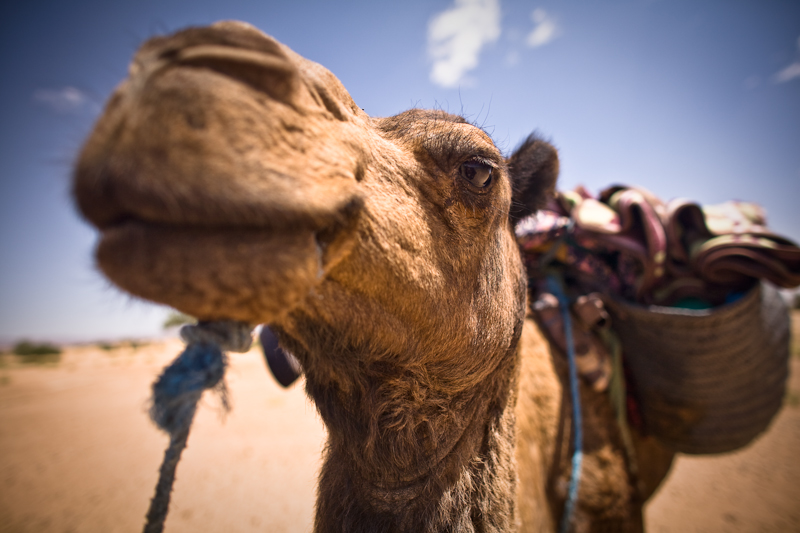
May 14, 2010
There is only an hour or two between the previous entry and this one. Since I wrote the last bit, we have eaten the day’s lunch. Rashid prepared and served us what he called “Berber Omelette,” an egg and tomato dish with peppers, onions and the usual spices that was remarkably like Turkish menemen. The camels are nearby, contented from the water we drew from a well right before lunch, and feeding on scraggly shrubs. Rashid is washing the dishes, which generally involves splashing some untreated well-water on everything and sloshing it around a basin. I try not to think that it’s the same basin the camels have drank out of, or that Rashid washed his feet in, or that Laura and I have also used to wash. Desert hygiene is not city hygiene.
At least he’s using soap.
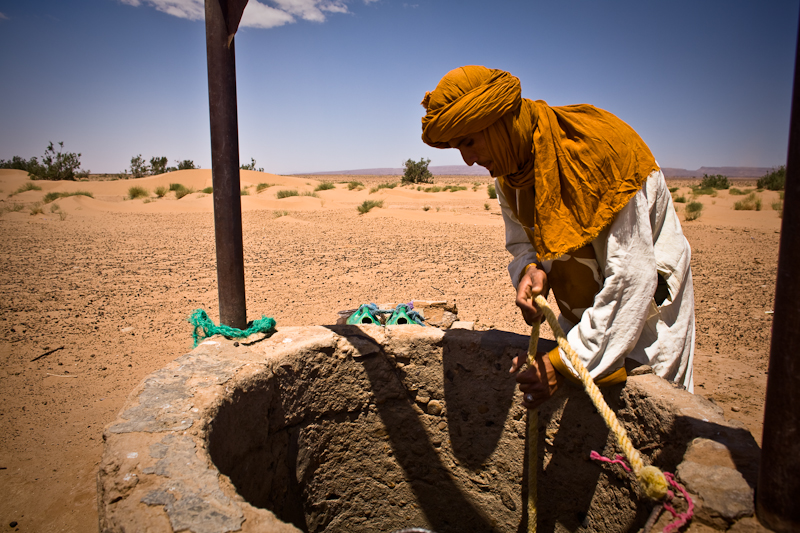
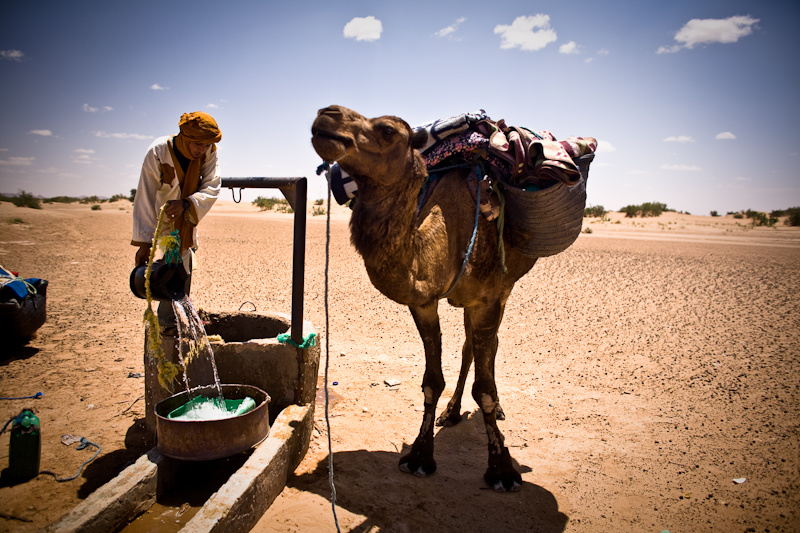
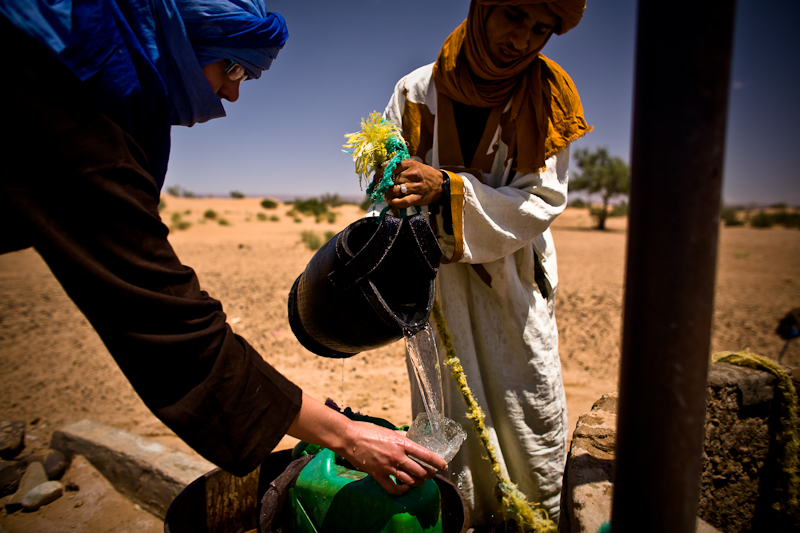
Laura and I are actually feeling spoiled and content on our rug in the shade. The day has already cooled somewhat and soon we’ll be packing up to continue the day’s journey. We haven’t actually ridden the camels yet, as they have been loaded down with our baggage to begin with, but we’re thinking we may this afternoon if the sand is too hot on our sandaled feet. Rashid has said vaguely that we will ride them apres, apres, “after, after.”
The afternoon winds are picking up a bit after the calm morning, and if we can expect the same hard winds as we experienced last night at the bivouac, then we will be heading westward into the setting sun and blowing sand, so the afternoon may present its own challenges.
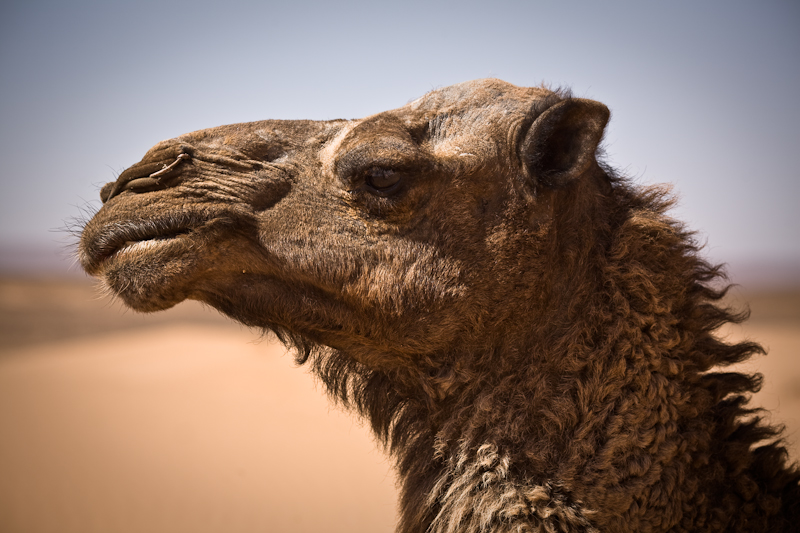
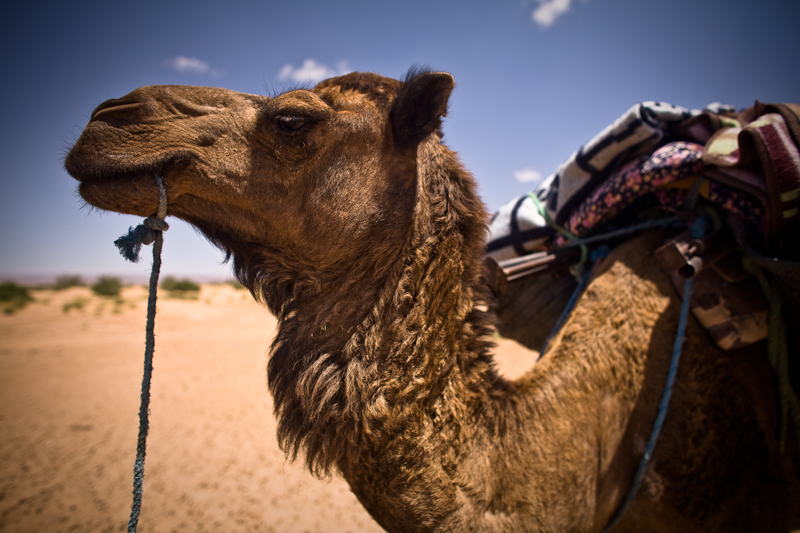
I wanted to mention that we have been enjoying some very basic Arabic help (and I mean very basic). Our communications with Rashid now span French, English, and crude Arabic, but we’re able to communicate most things well enough. We also got some primers last night from the other fellows. Unfortunately I only pulled out the notebook part way through, so most of our impromptu Arabic lesson has been lost, strings of foreign syllables that simply don’t stick in my mind. This is all that remains, based on my notes and my memory:
La bass = Hello
La = No
Chukran = Thank you
Gh’la = watermelon
Schwee-ah, schwee-ah = little, little
Sa-ha = Cheers
Bis sa-ha = Bon apetite
Sabah-hak-hairh = good morning
Yella! = Let’s go / Hurry up
Wa-ha = Okay
*Spellings are phonetic interpretations. Try to pronounce each letter. The H’s are somewhat guttural.
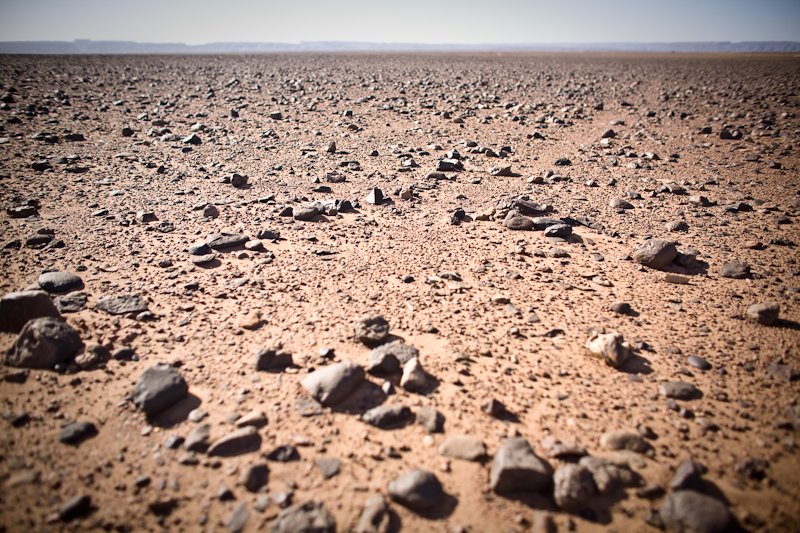
This is just one part of a six-part series on our camel trek in the Moroccoan Sahara. To read the full story, please click here.

Leave a Reply